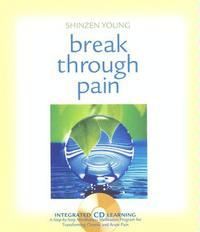

In the seemingly ever-expanding ethnic and national tensions that envelop and divide us, it is easy—and tempting—to forget what is common to us all.
Human beings share this: We dislike and attempt to avoid pain, and we yearn for pleasure. In the face of suffering we tend to tighten and fixate or freeze our anguish, thinking, for example: My headache (or sadness or anxiety) is permanent and will never go away. But our distress usually changes every few seconds, ebbing and departing and then often returning. In fixating, we create what I call phantom emotional pain—misery that is no longer present, but seems real. And when we encounter that pain, we turn away from it. Our strategies of avoidance run the gamut from ingesting addictive substances to emotionally numbing ourselves with television or shopping. And this, of course, ensures that the anguish returns, often with a vengeance.
Imagine that you could find a sanctuary in your daily experience from emotional and physical pain. And imagine further that such challenging experiences might also lead to profound transformation. In his book Break Through Pain, Shinzen Young shows us how.
Shinzen’s quietly radical book taught me that equanimity is not a fixed, essential characteristic, but a quality that can be trained and cultivated with practice. And that difficult physical and emotional experiences are not inherently painful. It is our relationship with and reaction to these challenges that creates distress.
I was suffering from poison ivy while writing this article, so I had a wonderful opportunity to test his innovative method. The urge to scratch my face, arms, and legs was intense. But with Shinzen’s techniques, I had a resource to work with the discomfort and resist the temptation to scratch. I opened to the intense physical sensations and any accompanying emotional reactions (such as self-pity or anger), noted them wholeheartedly, and observed how they emerged and receded.
Providing a method to work with pain by itself would be, as they say, worth the price of admission. But Break Through Pain offers more: Shinzen’s recommendations can be applied to the emotional as well as the physical realm. Pain, for him, is synonymous with any uncomfortable body sensation, including rage, dread, sorrow, jealousy, guilt, and shame. Break Through Pain teaches readers how to use pain as a pathway to emotional and spiritual freedom.
Written in a clear and jargon-free manner, Break Through Pain changed my basic orientation to meditation. I was struck by Shinzen’s lucid insights and his fresh approach, which while deceptively easy to describe, are incredibly powerful in their implications.
Written in a clear and jargon-free manner, Break Through Pain changed my basic orientation to meditation. I was struck by Shinzen’s lucid insights and his fresh approach, which while deceptively easy to describe, are incredibly powerful in their implications. I discovered a whole new way of working with pain and challenging emotions. Break Through Pain is an indispensable book for anyone in emotional or physical pain or searching for ways to cultivate more equanimity and freedom in his or her life.




1 Comment
Kay L.
What an inspiring piece. I am very interested in learning more. I will be picking up Shinzen’s “Break Through Pain”.